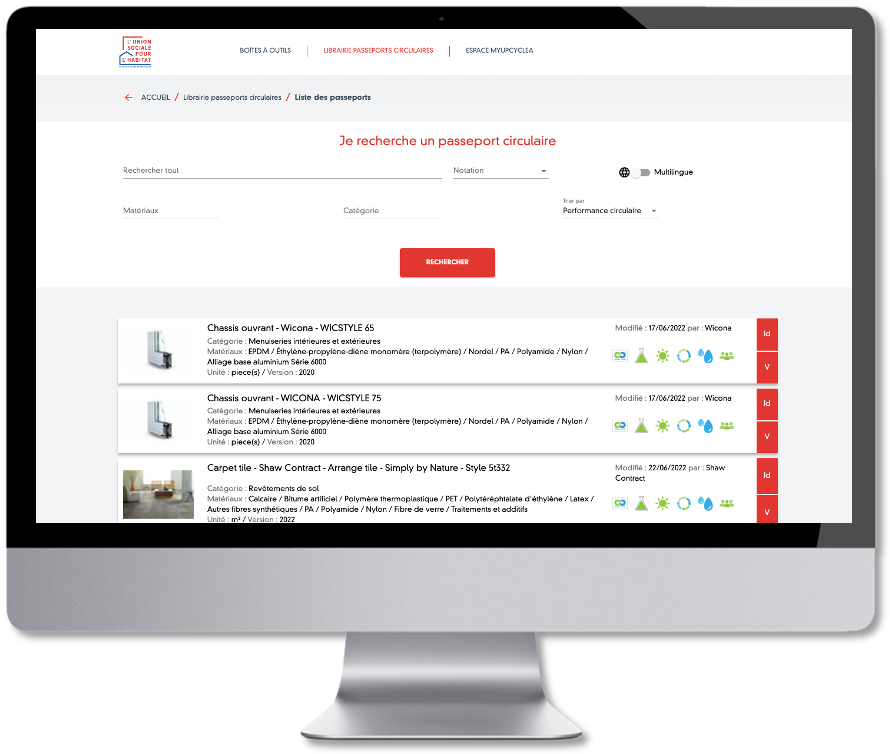Digitizing an ecosystem involves setting up data structures that will allow stakeholders to interact, via the AI technologies mentioned above. One thing that is important is to characterize the resources with a circular passport ®.
This article is a follow-up to “Carbon neutrality, why is data essential?”

The Circular Passport®, the identity card of a resource
The Circular Passport® is the environmental information sheet for a product. They include the LCAs of the EHDS/EPDs, are completed by the manufacturers themselves, and describe: the composition of the product (based on a universal nomenclature of materials), whether there are toxic molecules (in relation to the Cradle to Cradle® standard), the proportion of recycled or biobased materials in the product, the product’s next life (e.g., a take-back system), its production footprint (in terms of carbon, energy, water and social aspects), as well as additional information (place of production, dimensions, price, etc.).
The Circular Passport® Library
These passports are stored in a multilingual library of thousands of passports (available in the upcyclea.com/library or in the application myUpcyclea), after having been verified and rated (via 5 pictograms) on the basis of the evidence presented, in order to reassure users of the quality and veracity of the information declared.
The circular passport is used to characterize the products that make up a building, but also the needs for reuse or secondary raw materials. Similarly, the transformations rely on the nomenclature of the materials to indicate the inputs and outputs of their treatments, as well as the associated material,CO2 and water yields.
It is all this data that allows the algorithms of the myUpcyclea® platform to make proposals for reuse/upcycling/resource recycling ecosystems to an asset manager, called the Resource Manager®.
To extend your reading: “The eco-design of a “material bank building” in 3 points”
